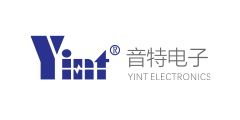The Emerging Substrate Market Grew At A Compound Annual Growth Rate Of 27%

Due to the need to improve performance and cost constraints, new materials, platforms, and designs are constantly being researched in the semiconductor industry. Over the past decade, some compound semiconductors, such as gallium arsenide (GaAs) for radio frequency (RF) and silicon carbide (SiC) for power electronics, have successfully competed with silicon and entered the mass market.
So, which emerging semiconductor substrate will be the next game-changer? In its latest report, Emerging Semiconductor Substrates 2023, Yole Intelligence (part of Yole Group) investigates the state of emerging semiconductor substrate technologies, Including gallium antimonide (GaSb), indium antimonide (InSb), bulk gallium nitride (GaN), gallium oxide (Ga2O3), bulk aluminum nitride (AlN) and diamond, as well as engineered substrates and templates. In addition, market research and strategic consulting firms have studied various potential applications such as power electronics, radio frequency, and photonics, including laser diodes, light-emitting diodes (LEDs), sensors, and detectors.
Including GaSb, InSb, bulk GaN, Ga2O3, bulk AlN, and diamond, as well as engineered substrates and templates, the emerging substrate market is worth $63.6 million in 2022 and is estimated to grow at a CAGR of 27% through 2028 to over $264.5 million.
Dr. Taha Ayari, compound semiconductor and emerging substrate technology and market analyst at Yole Intelligence points out that the power electronics market, driven by a variety of applications such as EV/HEV (electric and hybrid vehicles), renewable energy and power supplies, is still dominated by silicon-based technologies."Nevertheless, wide bandgap materials SiC and GaN (lateral GaN HEMTs on silicon or sapphire) have penetrated the power electronics market after a long development process and are expected to account for more than 25% of the power electronics market by 2028," he added. Benefiting from this momentum, Yole Intelligence expects volume GaN growth in vertical GaN devices and engineered substrates (SmartSiC from Soitec, SiCkrest from SICOXS, and QST from Qromis) over the next five years.
On the other hand, the optoelectronics market has seen steady growth in GASB-based devices such as infrared (IR) lasers and imagers, driven by high-end and niche military applications. The report also reviews the InSb market status. With regard to bulk GaN substrates in consumer, industrial, and automotive applications, the market is considered stable, with industrial applications set to get a bigger boost. During the pandemic, UVC disinfection/purification systems started using bulk AlN substrates. This will drive the AlN substrate market to a compound annual growth rate (CAGR) of 22% during 2022-2028, the highest among all emerging photonic substrates. During the pandemic, UVC disinfection/purification systems started using bulk AlN substrates. This will drive the AlN substrate market to a compound annual growth rate (CAGR) of 22% during 2022-2028, the highest among all emerging photonic substrates.
Dr Ali Jaffal, Compound Semiconductor and Emerging Substrate Technology and Market Analyst at Yole Intelligence noted: “Emerging substrate activity is mainly focused on technology development for better material quality, higher yields and lower production costs. "Of course, this push needs to be supported by market demand and volume applications that define the correct specifications for different substrates. This, combined with increasing substrate diameters, will drive the nascent substrate industry towards mass production."
For the power electronics industry, a mature foundry requires at least a 6-inch wafer size for high-volume production. This has prompted substrate manufacturers to optimize fabrication techniques and increase wafer size. For diamonds, methods have been developed to obtain inlaid diamonds up to 28mm x 28mm from etched pitch density (EDP), as well as heterogeneous diamonds grown to about 6 inches in diameter on silicon or sapphire substrates from Orbray or Audiatec. In addition, 6-inch bulk GaN substrates have been demonstrated using hydride vapor phase epitaxy (HVPE) and other techniques, although more work is still needed to improve the material quality and meet application requirements. Also for Ga2O3, different melt growth techniques are being used, with EFG (Edge Defined Film Growth) most promising to achieve 6-inch wafers with acceptable material quality in volume production. For engineered substrates, advanced splitting and bonding techniques are used to overcome the challenges of larger single-crystal substrates and better material quality.
- +1 Like
- Add to Favorites
Recommend
- II-VI Incorporated Completes the Acquisition of Coherent, Forming A Global Leader In Materials, Networking, and Lasers
- Electromagnetic Management Materials Played An Escort Role in the Normal Operation of Medical Equipment
- Material Positioning Management Solution to Achieve Precise Positioning and Efficient Management of Materials Through Advanced Technological Means
- ASAIR Established a Subsidiary Silicon Core Materials
- Bonding Materials Minimize Loss in Multilayer Millimeter-Wave PCBs
- Digging Deeper into Dielectric Constant for PCB Materials
- Latest Trends and Innovations in the Electronics Materials Industry
- Waermtimo, a New Composite Cooling Material Supplier, Anounced a Distribution with Sekorm to Enrich Carbon Fiber Thermal Conductive Materials and More
This document is provided by Sekorm Platform for VIP exclusive service. The copyright is owned by Sekorm. Without authorization, any medias, websites or individual are not allowed to reprint. When authorizing the reprint, the link of www.sekorm.com must be indicated.





























































































































































































































































































































































































































































































































































































































































































































































































































































































